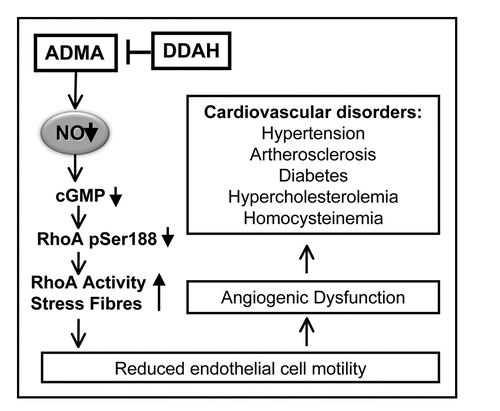Figures & data
Figure 1 Summary of the role of DDAH/ADMA in vascular function and homeostasis. Increased ADMA levels are associated with cardiovascular disorders, which are related to dysfunctional endothelial cell responses and may be reversed by modulating DDAH activity. ADMA inhibits NO production, resulting in activation of RhoA and stress fibres though inhibition of PKG activity and reduction of RhoA phosphorylation at Ser188. This pathway results in reduced endothelial cell motility and angiogenesis, which is reversed by DDAH activation.
